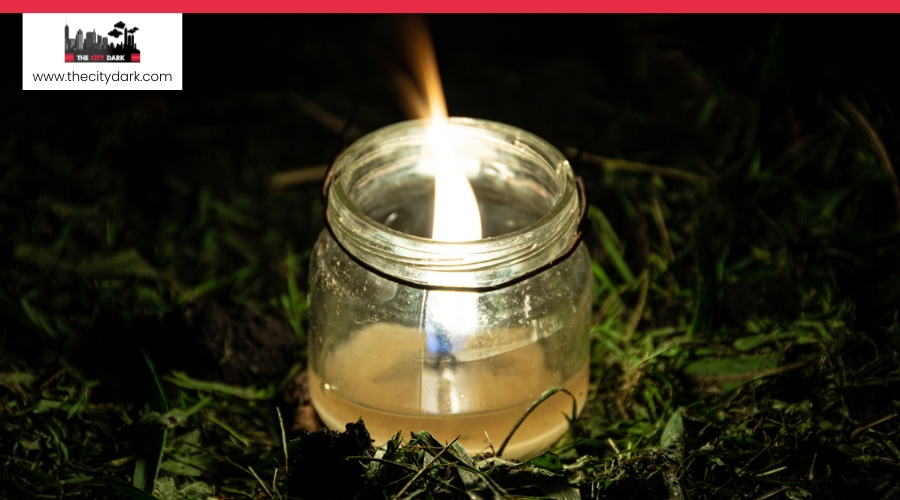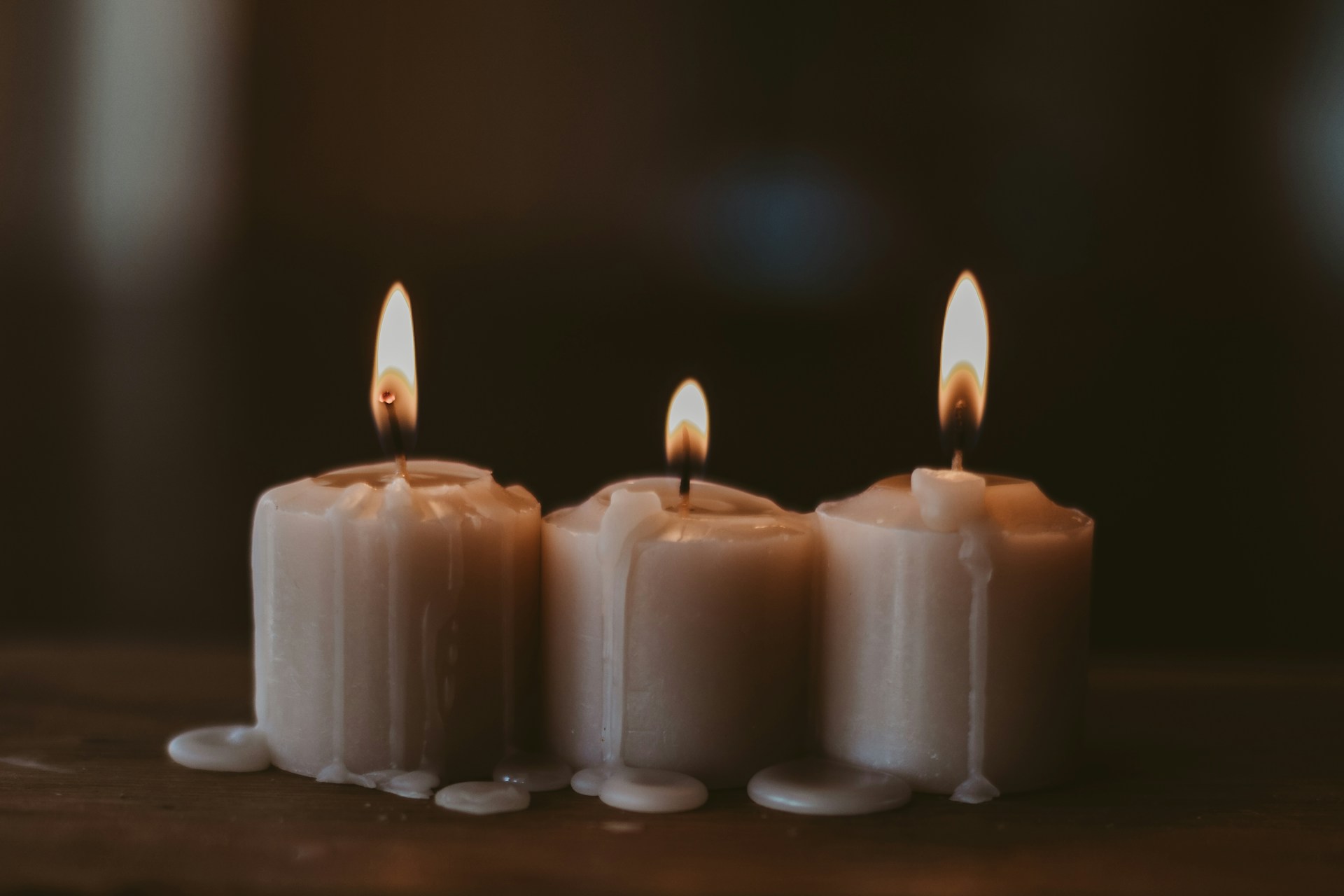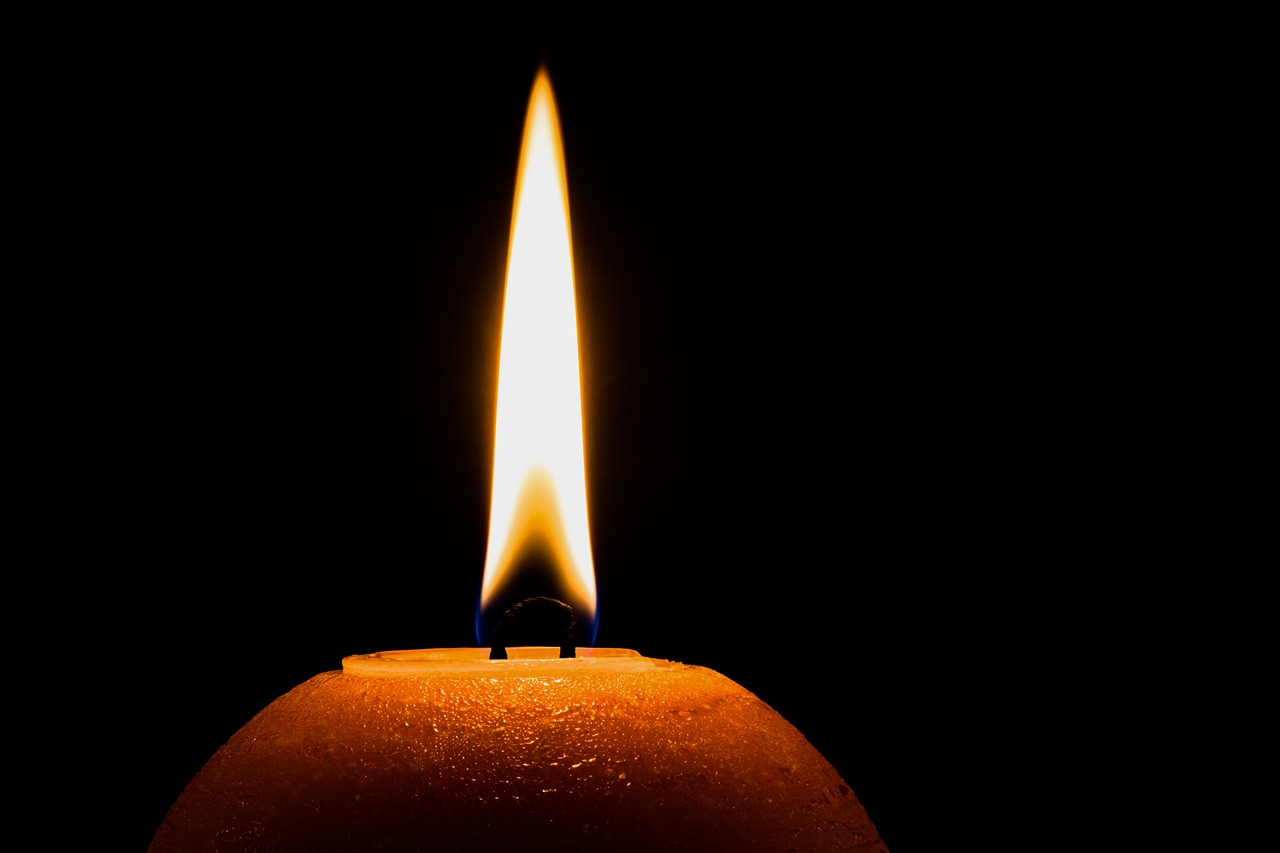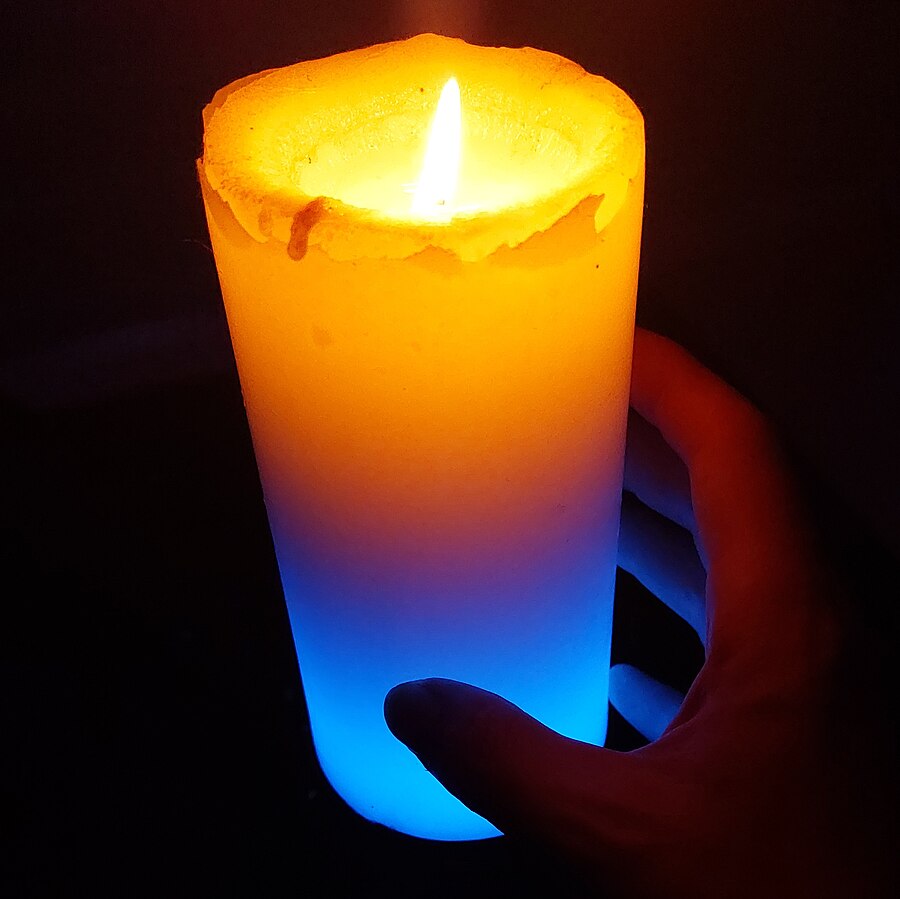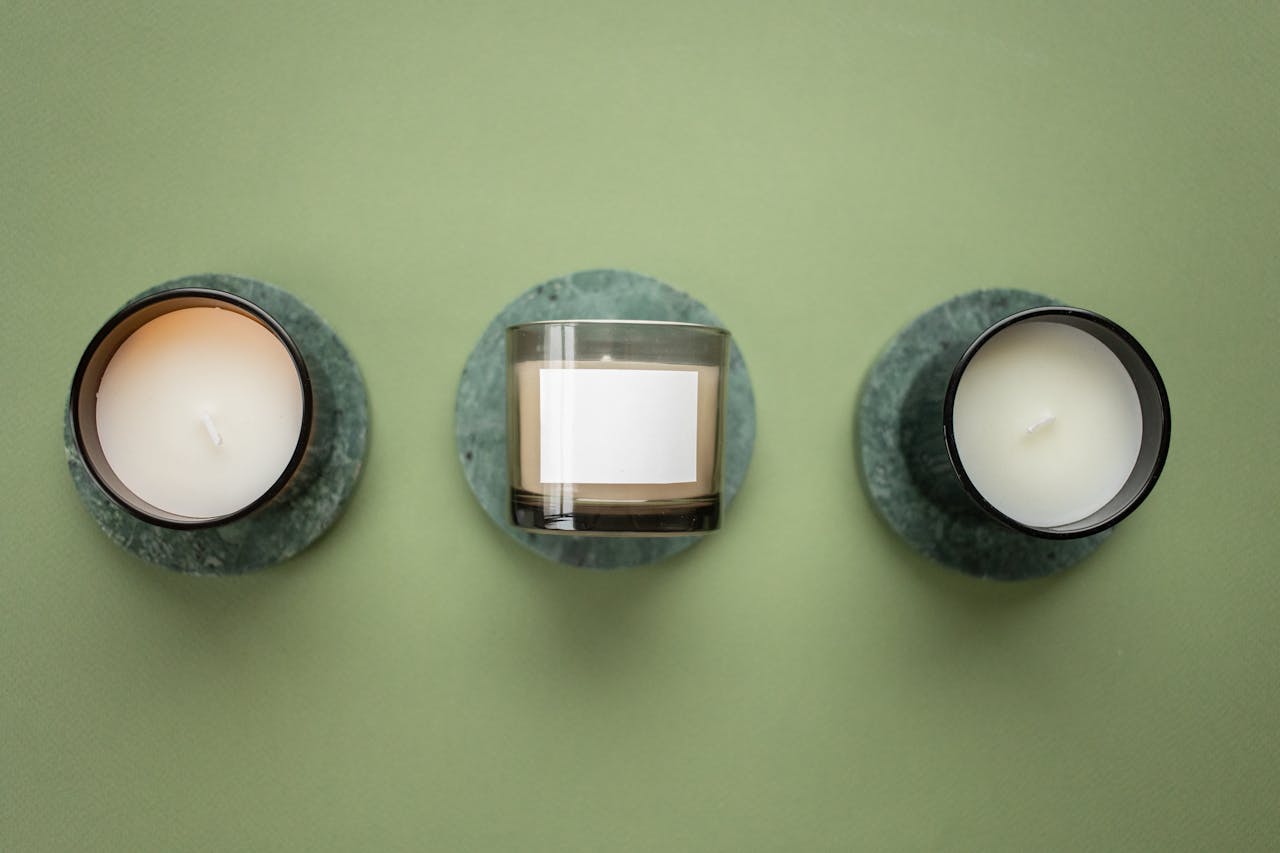Just as a lighthouse guides ships safely to shore, candles can be a beacon of light in survival situations, offering not just visibility but a sense of security and warmth. However, without proper care, this source of light can quickly turn into a hazard. You’ve probably heard countless times to never leave a candle unattended or to keep it away from flammable materials, but in the tense atmosphere of a survival scenario, it’s easy to overlook these cautions.
Ensuring the area around the candle is well-ventilated can prevent the accumulation of dangerous gases, and selecting an appropriate surface can mean the difference between safety and disaster. Let’s explore how you can harness the benefits of candles while mitigating risks, ensuring that this flicker of hope doesn’t lead to an uncontrollable blaze.
Key Takeaways
- Prioritize value, burn time, wax and wick types, and versatility when choosing candles for survival situations.
- Properly ventilate the area to avoid the dangers of harmful gas buildup when using candles.
- Place candles on fire-resistant surfaces and keep them away from combustible materials.
- Use alternative options such as battery-operated LED candles, solar-powered lanterns, and reflective emergency blankets for safer and more reliable lighting in emergency situations.
Selecting Appropriate Candles
When choosing candles for survival situations, it’s crucial to prioritize their value, burn time, wax and wick types, and versatility. You’re not just looking for any candle; you seek the best candle that ensures longer burn time and adheres to safe practices.
Emergency candles like UCO Emergency Candles, Stonebriar Tea Candles, and CandleLife Emergency Candles emerge as top contenders. These aren’t your average candles; they’re designed with survival in mind. Opting for candles made with high-melt paraffin wax can significantly reduce soot and dripping, making them safer and more efficient. However, don’t overlook beeswax candles and those made from palm wax, as they also offer substantial burn times and minimal environmental impact.
The wick is just as important as the wax. Cotton wicks are preferred for their ability to produce a bright and steady flame.
Moreover, versatility should be a key factor in your decision. Consider candles that can adapt to various scenarios, including refillable options and those using liquid paraffin. Remember, the goal is to maximize light and heat output while ensuring safety and efficiency.
Understanding Burn Time
Grasping the concept of burn time is crucial for anyone relying on candles in survival scenarios, as it directly impacts how long you’ll have light and warmth. Different candles offer varying burn times, which can significantly affect your preparedness in emergencies. When you’re selecting candles, understanding their burn time ensures you’re not left in the dark.
Here are three key points to remember about burn time:
- Type of Wax Matters: Natural waxes like soy and beeswax tend to burn cleaner and longer than Paraffin candles. This difference means you’ll use fewer candles over the same period, offering a more sustainable option during prolonged use.
- Wick and Candle Size: The wick type and the candle’s size influence its burn time. Thicker wicks and larger candles usually mean longer burn times, providing light for more hours.
- Environmental Factors: Ambient temperature and wind can affect a candle’s burn time. Candles burn faster in cold or breezy conditions, so consider your environment when calculating how many candles you’ll need.
Safe Candle Placement
Why is finding the right spot for your candles crucial in a survival situation? Safe candle placement is essential to prevent accidents and ensure your safety. When you use candles for emergency lighting or heating, it’s vital to position them carefully to avoid potential hazards. Here’s a quick guide to help you make informed decisions about where to place candles indoors:
| Location | Reason | Precaution |
|---|---|---|
| On sturdy surfaces | Prevent tipping | Choose non-flammable surfaces |
| Away from combustibles | Reduce fire risk | Keep away from curtains and papers |
| Well-ventilated areas | Minimize smoke buildup | Open windows when possible |
| Out of high traffic zones | Avoid accidental bumps | Place in secure, low-traffic spots |
| Away from kids and pets | Prevent burns and accidents | Ensure out of reach |
Ventilation Is Key
Ensuring your survival space has proper ventilation is crucial when using candles to avoid the dangers of harmful gas buildup. Whether you’re lighting candles made from liquid paraffin, which burn longer than paraffin, or opting for scented candles to mask odors, remember ventilation is key.
The risk of accumulating carbon monoxide and other dangerous fumes increases significantly in enclosed spaces without proper airflow. To keep the air fresh and safe while using candles as a light source or for heating, here are three essential tips to follow:
- Keep Windows or Doors Open: Always ensure there’s at least one window or door slightly open to allow fresh air to circulate, especially when using candles indoors for extended periods.
- Avoid Enclosed Spaces: Never use candles in completely enclosed spaces. If you’re in a shelter, make arrangements to secure adequate airflow to prevent respiratory issues from the melted wax and fumes.
- Outdoor Positioning: When outside, position your candles in a manner that leverages natural ventilation. This helps disperse smoke and fumes, reducing the risk of inhaling harmful gases.
Fire-Resistant Surfaces
To prevent accidental fires during emergencies, it’s crucial to place your candles on fire-resistant surfaces like metal, stone, or ceramic. Remember, your emergency kit isn’t just about having items like a UCO Candle; it’s also about using them wisely. Avoid flammable materials such as wood, cloth, or paper, which can easily catch fire and turn a controlled situation into a hazardous one.
Make sure the surface you choose isn’t only fire-resistant but also stable and flat to prevent your candle from tipping over. This is where investing in a candle holder or a tray pays off. Not only do they contain any wax drips, but they also enhance safety by keeping the flame contained.
For an added layer of safety, consider using a terracotta pot or a metal tin as part of your setup. These materials are excellent at resisting heat and can help you start a fire safely when needed. Always remember to place your candles away from anything that could catch fire.
Managing Multiple Candles
When using multiple candles for light or warmth, it’s crucial to manage their placement carefully to avoid accidents. In survival situations, the right strategy can make a significant difference. Here are some safe practices for managing multiple candles effectively:
- Use a Candle Lantern: Candle lanterns are perfect for managing multiple candles safely. They not only protect the flame from wind but also consolidate light in one portable unit. This makes them easy to store and move around, ensuring that you’ve got light wherever you need it without juggling several candles at once.
- Stagger Burn Time: Instead of lighting all your candles at the same time, stagger their burn time. This way, you extend the overall duration of light and warmth you can get from your candles. It’s a simple yet effective strategy to make the most out of your resources in survival situations.
- Avoid Using Candles in Tight Spaces: When you’re managing multiple candles, it’s important to avoid using them in cramped or enclosed areas. The risk of depleting oxygen levels or causing an accident is higher in such settings. Always ensure there’s adequate ventilation to keep things safe.
Extinguishing Techniques
Safely snuffing out your candles is as crucial as lighting them up in survival situations. When your candles burn, ensuring they’re extinguished correctly can prevent accidents and preserve your resources. Here are some extinguishing techniques that’ll keep you safe and your candles a good companion in the dark.
Firstly, gently blow out the candle from a close distance. This minimizes the risk of splattering wax, which can be a hazard, especially in confined spaces. If you’ve got candles made with a lot of Candle Wax, this technique helps in controlling the wax.
Using a candle snuffer is another effective method. It extinguishes the flame without causing smoke or hot wax splatter, making it ideal for tight or precarious environments. For those who’ve improvised candles in a plastic container, this method ensures the container isn’t damaged.
Dipping the wick into the melted wax with a non-flammable tool quickly puts out the flame. This technique not only stops the flame without smoke but also coats the wick, making your candles easier to light next time, possibly even with stormproof matches.
Always avoid blowing out candles near flammable materials and ensure the candle is completely out before leaving it unattended.
Emergency Candle Alternatives
While candles serve well in emergency situations, exploring alternatives like flashlights and solar-powered lanterns can offer safer and more reliable lighting solutions. When you’re caught in a Winter Power Outage, or simply prepping your survival kit, it’s crucial to know the best option among emergency candle alternatives.
Here are three top picks to consider:
- Battery-operated LED Candles: They’re a fantastic flameless option, providing the ambient lighting of traditional tea lights without the fire hazard. Plus, many models feature hours of burn time, ensuring you’re never left in the dark.
- Solar-powered Lanterns: Ideal for long-term use, these lanterns harness the power of the sun, negating the need for fuel. They’re not just eco-friendly but also highly efficient, making them a smart choice for sustainable lighting.
- Reflective Emergency Blankets: While not a light source on their own, these blankets can significantly amplify the light from other sources. Pair them with a battery-operated LED candle or a solar-powered lantern for an enhanced lighting setup.
Adhering to safe practices with these emergency candle alternatives ensures you’re prepared, come what may, without compromising on safety.
Regular Candle Maintenance
Having explored safer alternatives to traditional candles, it’s also important to know how to maintain those you still choose to use. Regular candle maintenance is crucial for their safe and efficient use, especially in survival situations where resources may be limited. Here’s a quick guide to keep your candles bright enough and ready for any emergency.
| Maintenance Task | Why It’s Important | How Often |
|---|---|---|
| Trim the wick to 1/4 inch | Prevents soot and ensures a clean burn | Before each use |
| Keep the wax pool clear | Maintains an even and consistent burn | After one or two hours per use |
| Store in a cool, dry place | Prevents discoloration and melting | As needed |
| Rotate candles | Prevents uneven burning | Regularly |
| Inspect for damage | Ensures safe and effective use | Before lighting |
Conclusion
In conclusion, when you’re relying on candles for light or warmth in survival situations, it’s crucial to prioritize safety. Choose the right candles, understand their burn times, and always place them on fire-resistant surfaces. Ensure the area is well-ventilated and manage the number of candles carefully. Learn how to extinguish candles properly and explore alternative light sources for emergencies.
Regular maintenance of your candles can also make a big difference. Stay safe by following these guidelines diligently.

